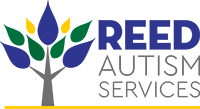Autism Resources
What Is Applied Behavior Analysis?
Applied Behavior Analysis (ABA) is a proven science-based approach to education that is effective in teaching life skills and foundational learning skills to individuals with autism. Here’s what you need to know.
You might have heard professionals talking about ABA, or Applied Behavior Analysis, when it comes to helping your child learn. ABA is an evidence-based model of teaching and learning that encourages meaningful change in areas ranging from social skills and academics to life skills and job training. It is widely recognized as an effective treatment for autism spectrum disorder by the U.S. Surgeon General, American Academy of Pediatrics and the National Institute of Mental Health. In fact, decades of research have shown that intensive ABA treatment is the most successful approach for children with autism.
“At its core, Applied Behavior Analysis (ABA) is simple: It is a science-based educational approach that breaks down any task into a series of smaller, more teachable steps.”
These steps are taught with the individual in mind, and the approach is tailored to best suit their learning style and needs. As each step is mastered, the next is tackled and linked to the ones that came before it—until an individual is able to accomplish a desired skill.
ABA utilizes scientific and ethical approaches to understanding why people do what they do and helps people make meaningful changes to their behavior. Behavior analysts collect data every step of the way so that they can assess the success of what they are doing and determine when to make modifications to support learning. Continual analysis and responsiveness to student needs leads to greater success. ABA clinicians follow the ABCs of applied behavior analysis:
Antecedent: The prompt, or initial situation, that leads to a certain behavior.
Behavior: The action or behavior in response to the antecedent—what does the individual do, in that situation?
Consequence: What happens after the behavior. The consequence can result in either an increase or decrease in the behavior.
In an educational setting, a Board Certified Behavior Analyst (BCBA) will typically be the individual responsible for the development and oversight of the ABA program. BCBAs design educational programming that is designed to promote a child’s independence and his/her ability to respond to the environment in increasingly complex ways. This approach to programming is also intended to ensure the maintenance of skills over time and the demonstration of these skills in more naturalistic settings (i.e., generalization).
A final consideration of ABA intervention is that it is not limited to the teacher-student dynamic. Effective ABA programs also incorporate the family’s values, goals, and concerns. Collaboration between school staff and family members is essential to success, and quality programs must make efforts to value and support parents as partners in the development and implementation of their child’s IEP.

